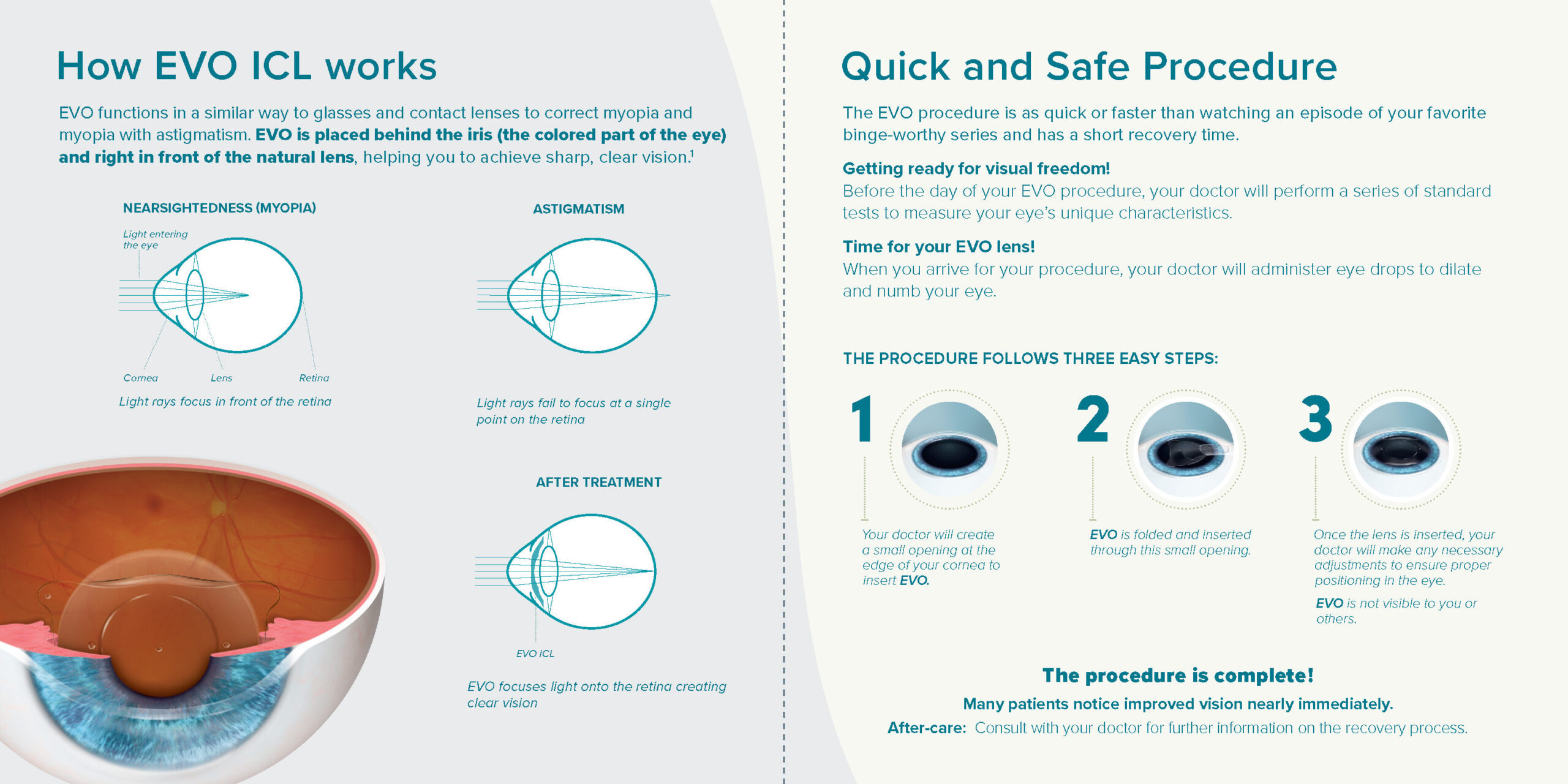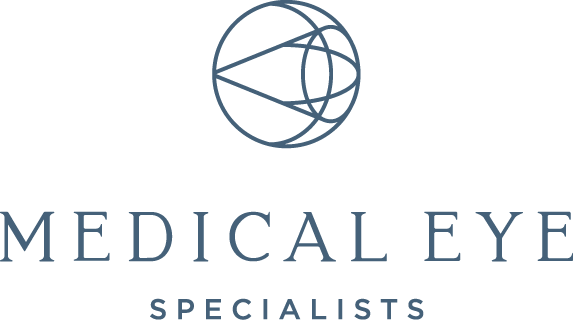LASIK and Refractive Surgery
Laser-assisted in situ keratomileusis (LASIK) and photorefractive keratectomy (PRK) are refractive surgery techniques used to help improve vision by modifying the cornea. They correct common eye disorders such as nearsightedness (myopia), farsightedness (hyperopia) and astigmatism in order to reduce or eliminate the need for glasses or contacts.
At Medical Eye Specialists, every procedure for laser vision correction begins with a free consultation. We understand the importance of your vision and we are dedicated to a “patient first” philosophy of care. Our team will take the time to explain every step of the evaluation, procedure and whether you are a candidate for LASIK, PRK or lens-based refractive surgeries.
What is LASIK?
What is PRK?
What is EVO ICL?
What is RLE?
The Basics of LASIK

What is LASIK?
Laser-assisted in situ keratomileusis (LASIK) is the most well known refractive surgery to most patients. During the procedure a laser is used to reshape the cornea so that the light entering the eye focuses properly onto the retina.
Ideal LASIK candidates:

Individuals over the age 18 with a history of stable vision

Mild to moderate levels of myopia, hyperopia or astigmatism
LASIK is performed in three steps:

A thin flap of tissue is created using a femtosecond laser.

The cornea is gently reshaped using an excimer laser, correcting the underlying refractive errors.

The flap is laid back down to heal.
LASIK Recovery
The laser treatment only takes about 15 minutes for both eyes, and most patients are able to return to work and their usual activities within 1 to 2 days after the procedure. Some patients will be able to see clearly the next day, whereas others will notice an improvement over several days.
Custom LASIK
We are proud to offer Custom “all laser” LASIK to our patients in Southwest Montana. Custom LASIK begins by making a 3D map of your eye with a device known as an iDesign wavescan. The 3D map will create a treatment specific to your eye. iDesign will also map your iris, allowing your personalized treatment to be lined up with your eye in a very precise manner.
The Basics of PRK

What is PRK?
Like LASIK, PRK uses a laser to reshape the cornea to improve how light enters the eye and focuses onto the retina.
Ideal PRK candidates:

Individuals over the age 18 with a history of stable vision

Mild to moderate levels of myopia, hyperopia or astigmatism

Suitable for patients with a thin cornea who are not eligible for LASIK
PRK is performed in three steps:

The surface of the cornea (the epithelium) is removed.

The cornea is gently reshaped using an excimer laser.

A “bandage” soft contact is placed over the cornea to protect the eye.
PRK Recovery
The laser treatment only takes about 15 minutes total for both eyes. Initial recovery from PRK surgery is slower than recovery from LASIK because it takes a three to four days for the epithelium to regenerate. Vision improvement is gradual and may take one week.
LASIK & PRK Side Effects & Risks
It’s important to have realistic expectations when considering refractive surgery. The day after the procedure, your eyes may feel sensitive to light and you may experience some tearing. Like any surgical procedure, LASIK and PRK can result in complications. However, the overwhelming majority of these complications are mild, and many will resolve on their own. The Medical Eye Specialists team will review all of the risks and benefits of refractive surgery with you in person to help you make an informed decision.
The Basics of EVO ICL

What is EVO ICL?
Implantable Collamer Lens (ICL) is a biocompatible lens used in the eye to correct myopia and astigmatism. During the procedure, the ICL implant is positioned inside the eye, between the iris and the natural lens.
Ideal EVO ICL candidates:

Individuals between the ages of 18 and 50, with a history of stable vision

Individuals with high levels of myopia or astigmatism

Individuals who want a reversible option for vision correction
EVO ICL is performed in three steps:

A small opening is created at the edge of your cornea to insert EVO

EVO is folded and inserted through this small opening

Once the lens is inserted, your doctor will make any necessary adjustments to ensure proper positioning in the eye

EVO ICL Recovery
Vision correction with the EVO ICL is an outpatient procedure that typically takes 20 to 30 minutes. A follow up is scheduled the same day as the procedure. Some patients will be able to see clearly the next day, whereas others will notice an improvement over several days.
The Basics of RLE

What is RLE?
Refractive Lens Exchange (RLE) is a procedure where the patient’s natural crystalline lens, which sits behind the iris, is removed and replaced with a biocompatible lens. This lens will have a prescription unique to the patient’s refractive error.
Ideal RLE candidates:

Individuals with presbyopia, stable vision and myopia, hyperopia or astigmatism

Individuals over the age of 45 with a history of stable vision
RLE Recovery
Vision correction with RLE is an outpatient procedure that typically takes 20 to 30 minutes. Some patients will be able to see clearly the next day, where as others will notice an improvement over several days.
EVO ICL and RLE Side Effects and Risks
Any medical procedure has certain risks associated with it. Potential complications of the EVO ICL and RLE procedure, although rare, include inflammation, an increase in eye pressure, or the need for an additional procedure, like a lens exchange. While these potential risks are mitigated as much as possible, they can all typically be addressed early and without long-term side effects. The Medical Eye Specialists team will review all of the risks and benefits of lens based refractive surgery with you in person to help you make an informed decision.
